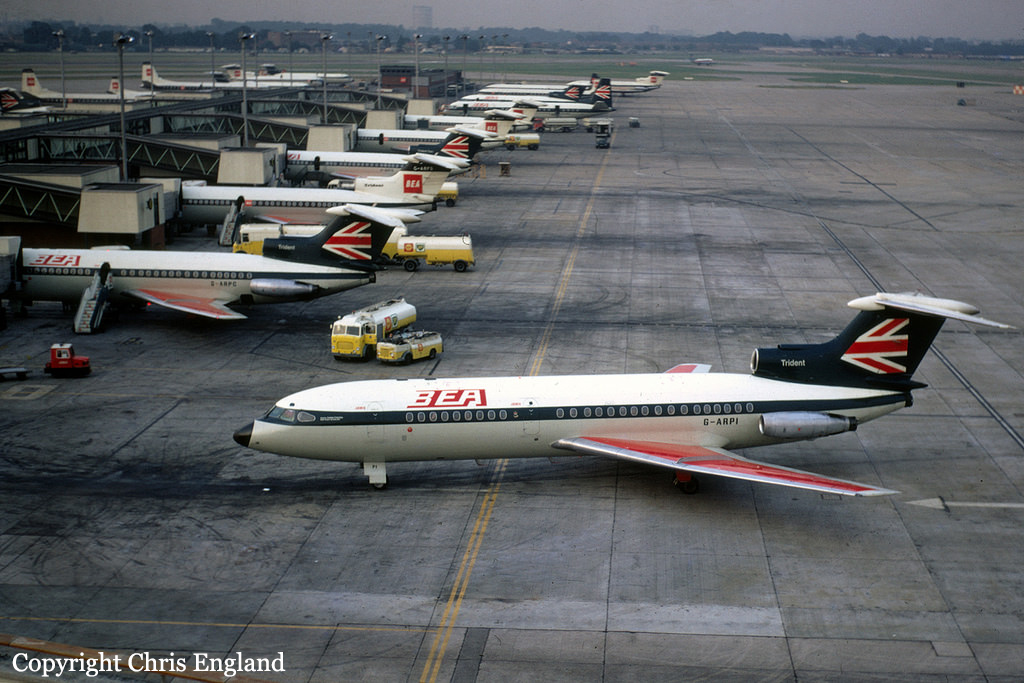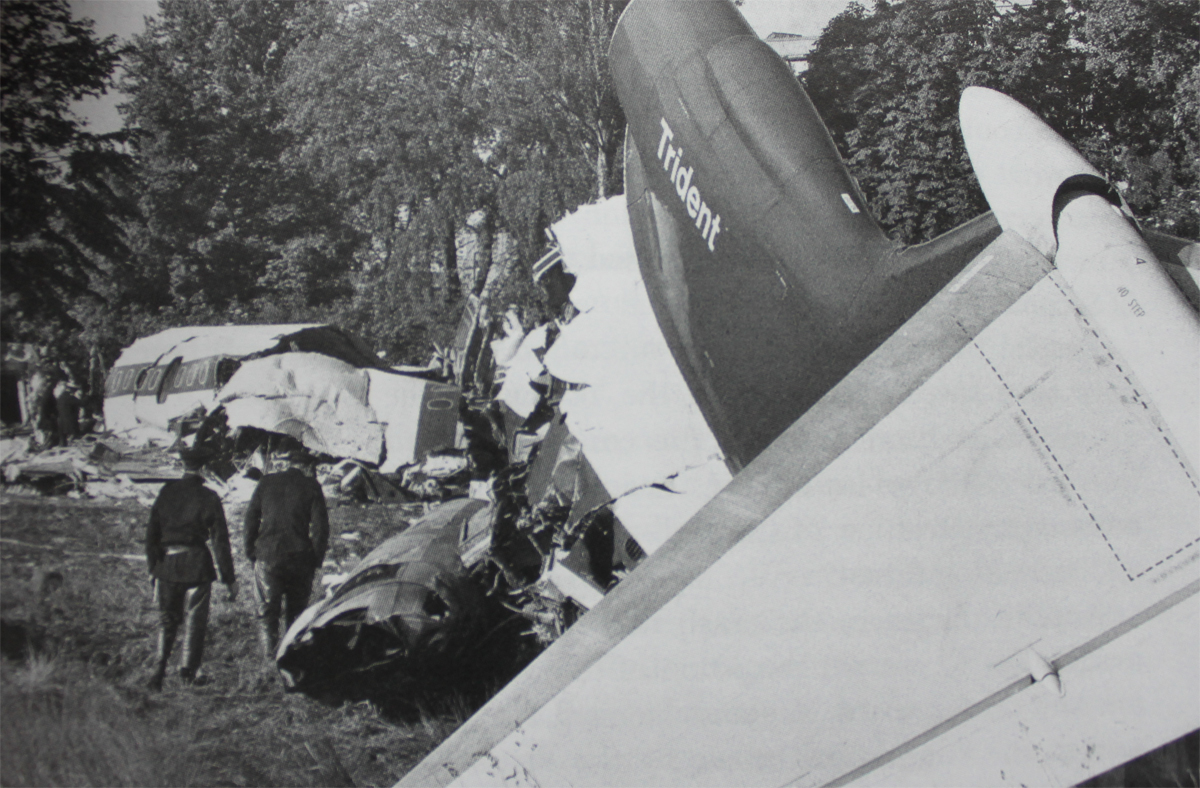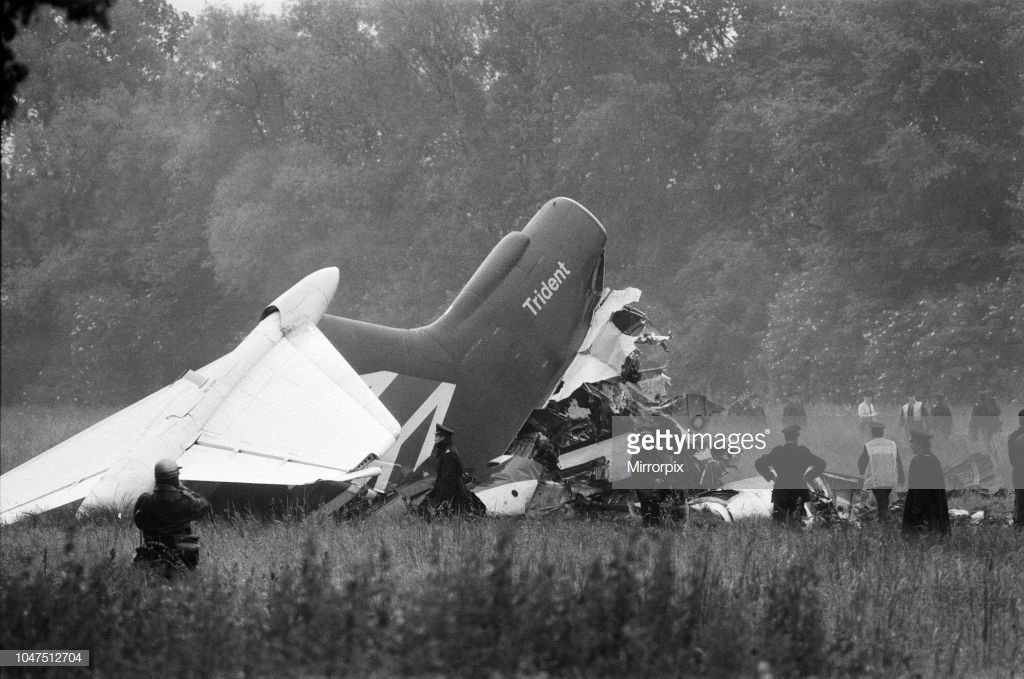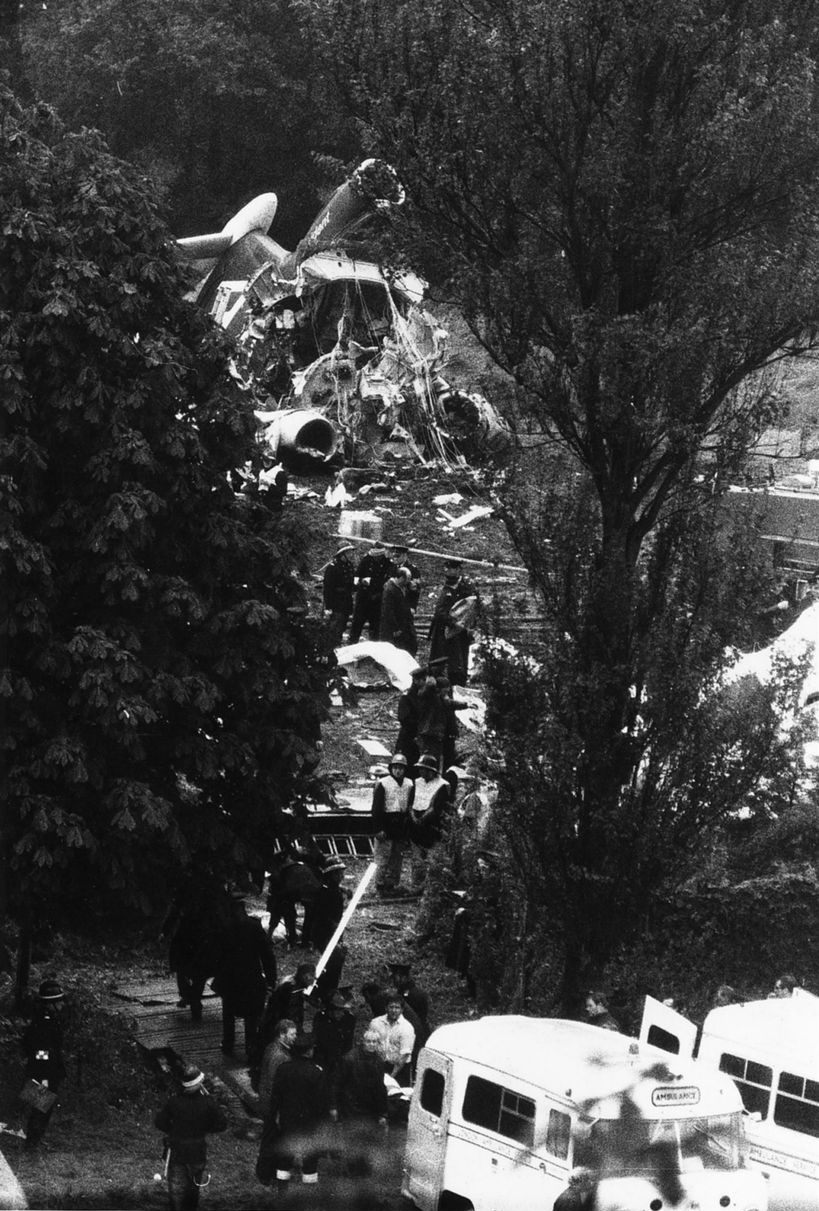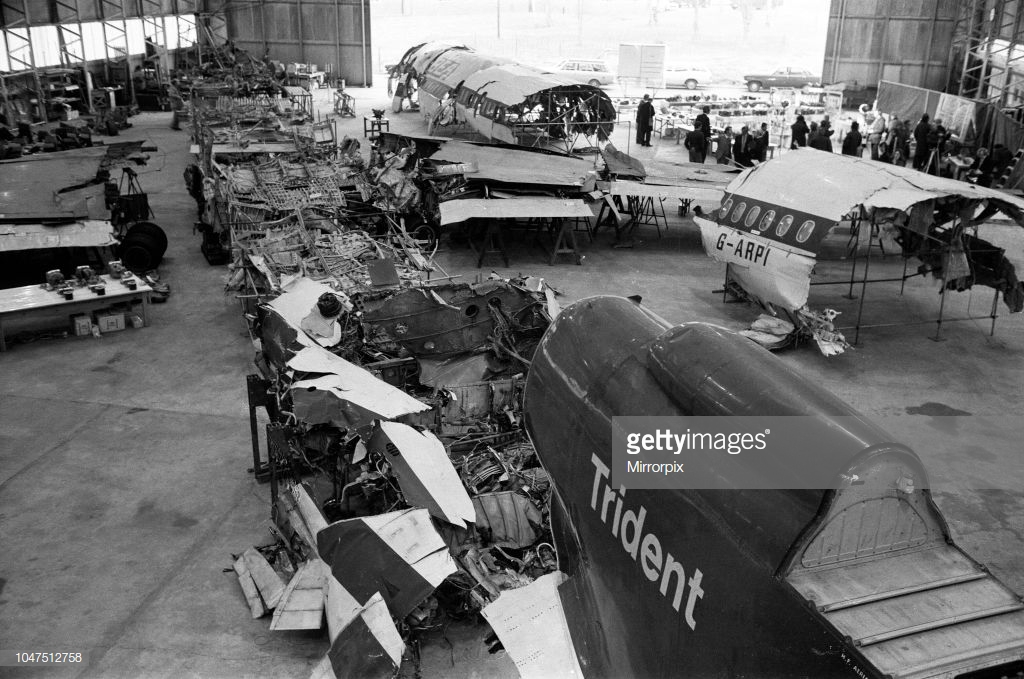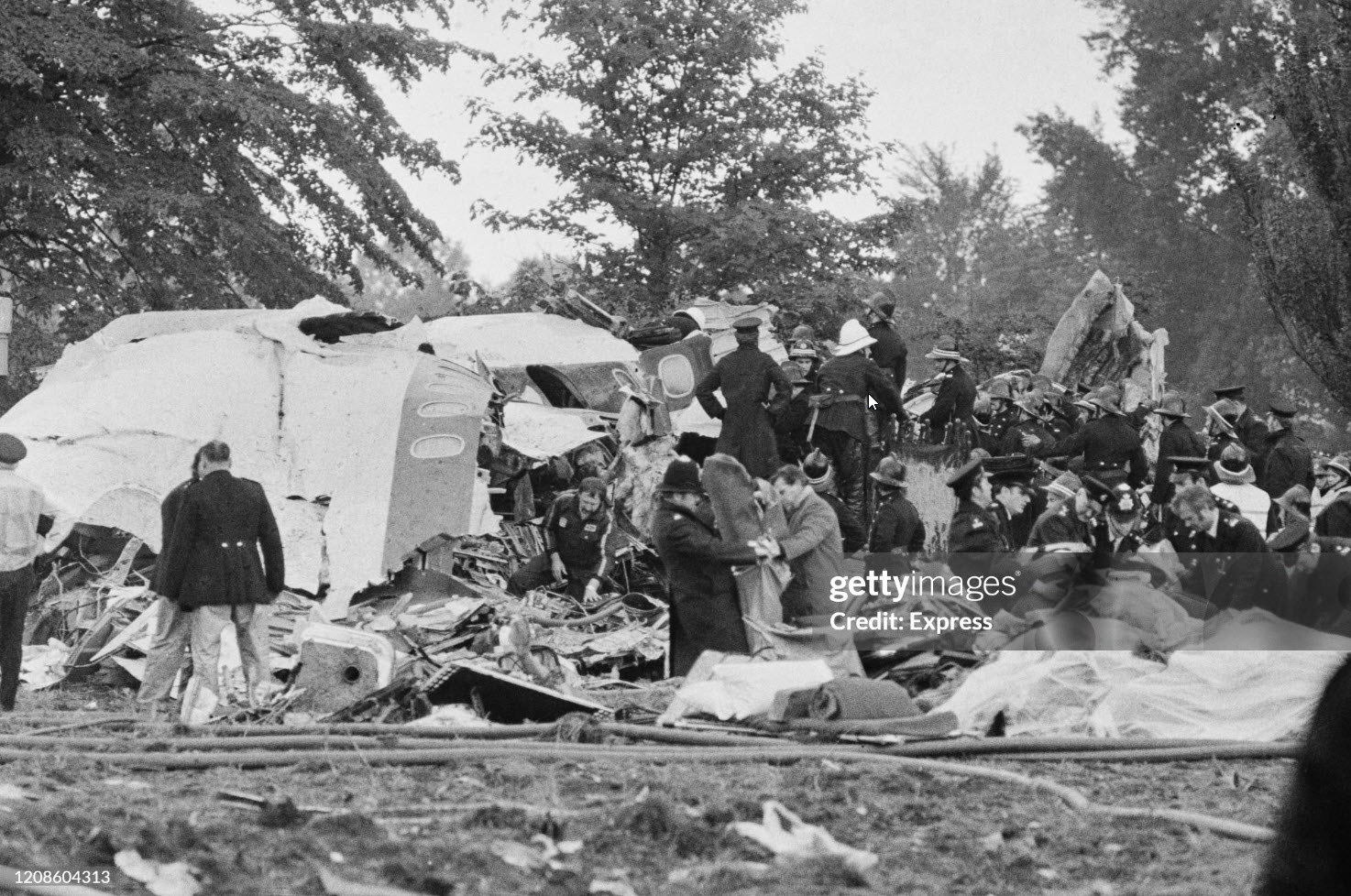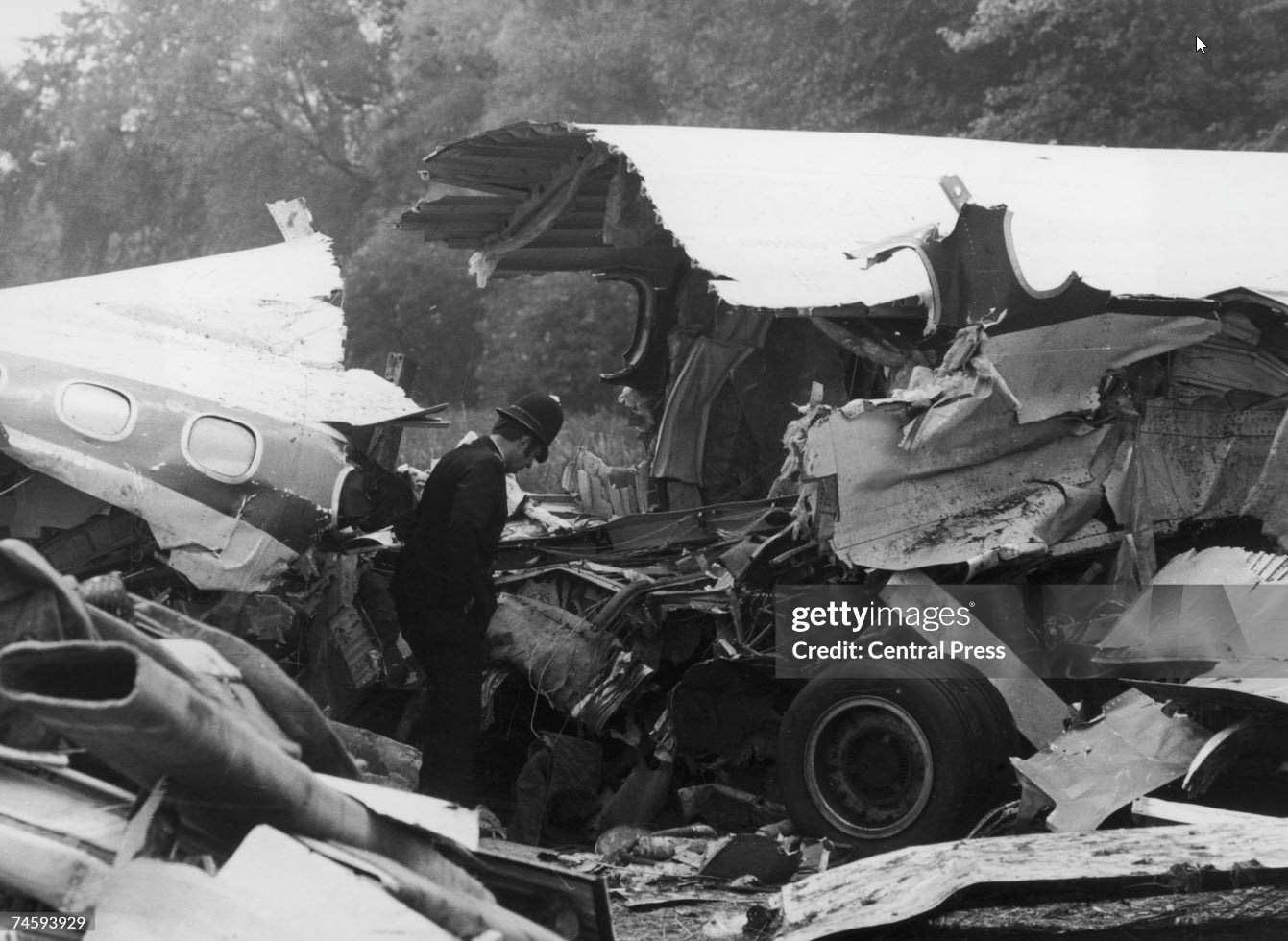Country
Crash of a Hawker-Siddeley HS.121 Trident 2E in Guilin
Date & Time:
Mar 22, 1990
Registration:
B-2208
Survivors:
Yes
Schedule:
Shanghai - Guilin
MSN:
2165
YOM:
1974
Crew on board:
5
Crew fatalities:
Pax on board:
102
Pax fatalities:
Other fatalities:
Total fatalities:
0
Circumstances:
Following a wrong approach configuration at Guilin Airport, the three engine aircraft landed too far down the runway. Unable to stop within the remaining distance, the aircraft overran, lost its right main gear and came to rest in a grassy area. All 107 occupants evacuated safely while the aircraft was damaged beyond repair. Weather conditions were poor at the time of the accident with rain showers and limited visibility. Thus, the runway surface was wet and the braking action was limited.
Crash of a Hawker-Siddeley HS.121 Trident 2E in Hong Kong: 7 killed
Date & Time:
Aug 31, 1988 at 0919 LT
Registration:
B-2218
Survivors:
Yes
Schedule:
Guangzhou - Hong Kong
MSN:
2159
YOM:
1973
Flight number:
CA301
Crew on board:
11
Crew fatalities:
Pax on board:
78
Pax fatalities:
Other fatalities:
Total fatalities:
7
Aircraft flight hours:
14332
Circumstances:
A Hawker Siddeley HS-121 Trident 2E passenger jet, registered B-2218, was damaged beyond repair in a landing accident at Kowloon Bay, Hong Kong. There were 78 passengers and seven crew members crew members on board. The airplane operated on CAAC flight 301 from Guangzhou-Baiyun Airport (CAN) to Hong Kong-Kai Tak International Airport (HKG). As the aircraft neared runway 31 the right outboard trailing edge wing flap struck the innermost approach light and the right main landing gear tyres hit the facing edge of the runway promontory. The right main gear was torn from the wing. The aircraft became airborne again and next contacted the ground 600 metres down the runway. It then veered off the runway to the right, yawed to the right and slid diagonally sideways across the grassed runway strip. The nosewheel and left main gear collapsed, and the aircraft continued until it crossed the parallel taxiway and slid sideways over the edge of the promontory into Kowloon Bay. The aircraft came to rest in the water with the rear extremity of the fuselage supported on a ledge of stone blocks that jutted out from the promontory. Part of the forward fuselage, including the flight compartment, was partially detached from the remainder of the fuselage and hung down at a steep angle into the water from control cables and secondary structure. A fire started in the centre engine intake duct. Weather at the time of the accident was poor including rain and fog with 450 m visibility. Seven occupants, six crew members and one passengers, were killed.
Probable cause:
There was insufficient evidence to determine the cause of the accident. It appears probable that, having converted to visual references at some point prior to Decision Height, the commander elected to continue the approach despite the fact that heavy rain had caused a sudden marked deterioration in the visual references in the final stages. There was no conclusive evidence that the aircraft encountered significant windshear on the approach, but given the meteorological conditions that existed at the time it cannot be ruled out, and therefore windshear may have been a contributory factor in destabilising the approach.
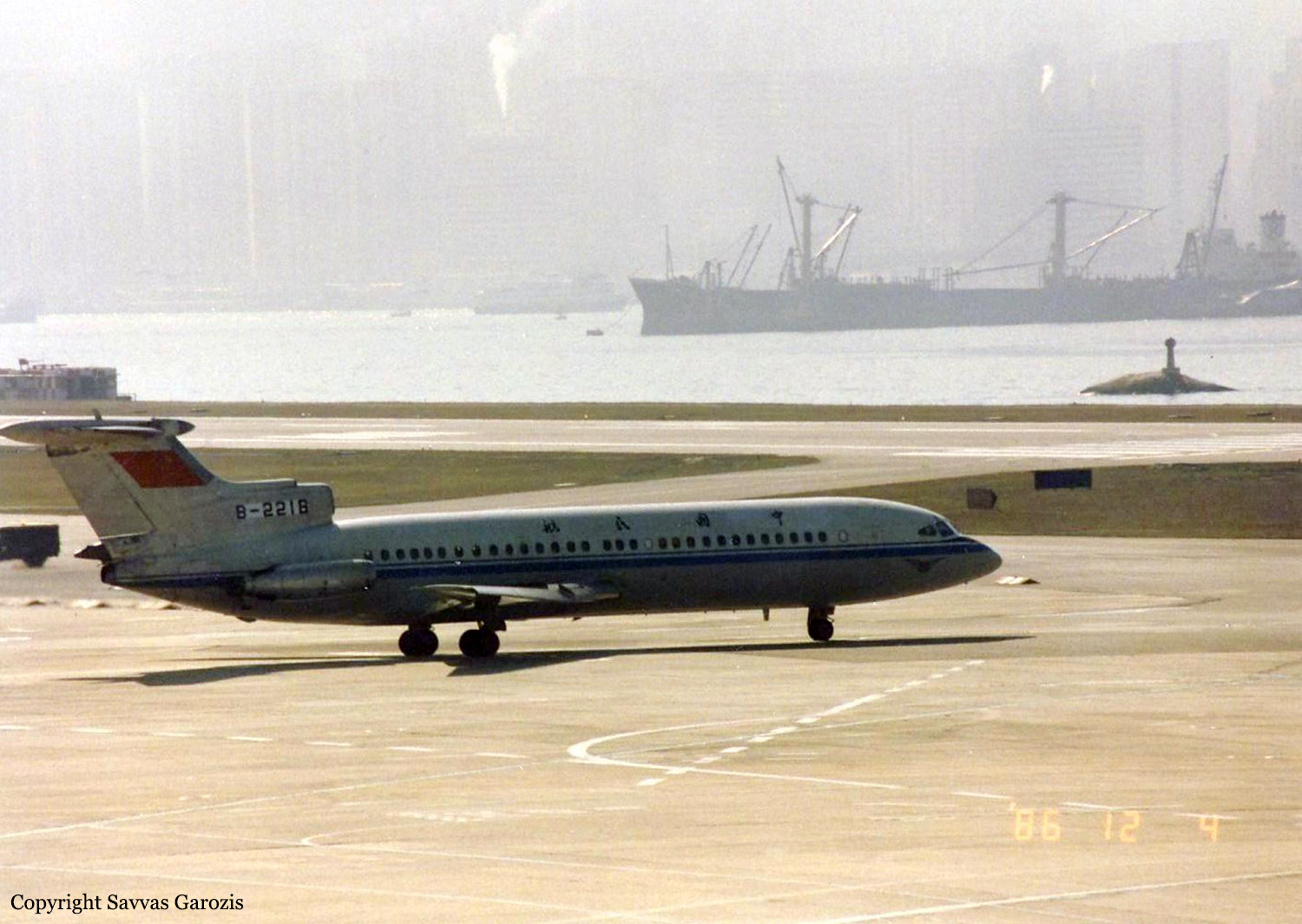
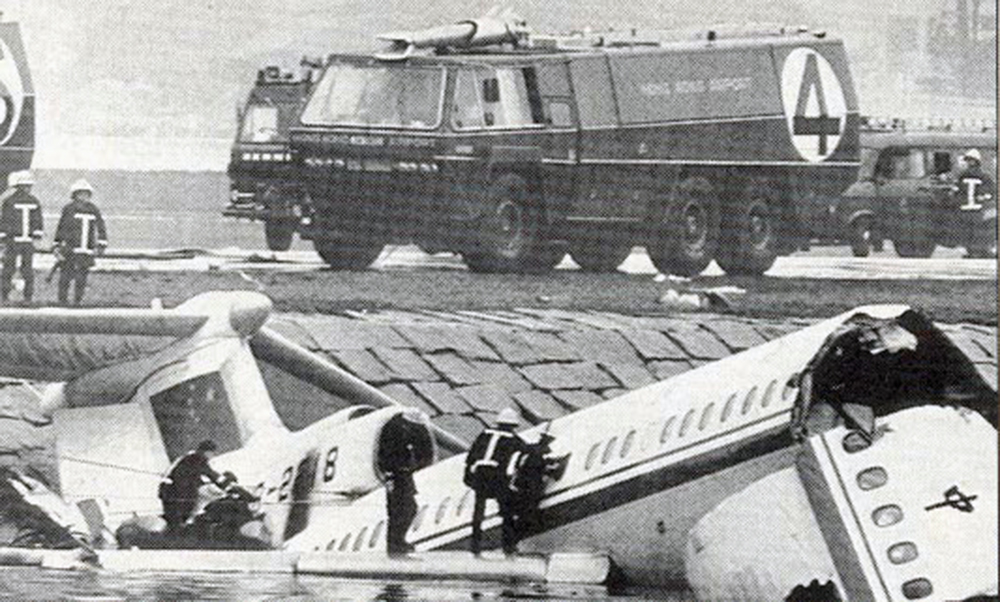
Crash of a Hawker-Siddeley HS.121 Trident 2E in Guilin: 11 killed
Date & Time:
Sep 14, 1983 at 0934 LT
Registration:
B-264
Survivors:
Yes
Schedule:
Guilin - Beijing
MSN:
2169
YOM:
1975
Crew on board:
6
Crew fatalities:
Pax on board:
100
Pax fatalities:
Other fatalities:
Total fatalities:
11
Circumstances:
While taxiing at Guilin Airport, the airplane was hit by a Chinese Air Force Harbin H-5 bomber that apparently crashed upon landing. The Trident broke into several pieces and caught fire. Eleven passengers, all foreign citizens, were killed, while 27 other people were injured and 68 escaped uninjured.
Crash of a Hawker-Siddeley HS.121 Trident 2E in Fuzhou
Date & Time:
Feb 27, 1983
Registration:
B-260
Survivors:
Yes
MSN:
2167
YOM:
1975
Crew on board:
6
Crew fatalities:
Pax on board:
90
Pax fatalities:
Other fatalities:
Total fatalities:
0
Circumstances:
After touchdown at Fuzhou Airport, the three engine airplane was unable to stop within the remaining distance. It overran, lost its nose gear and came to rest few dozen meters further. All 96 occupants evacuated safely while the aircraft was damaged beyond repair.
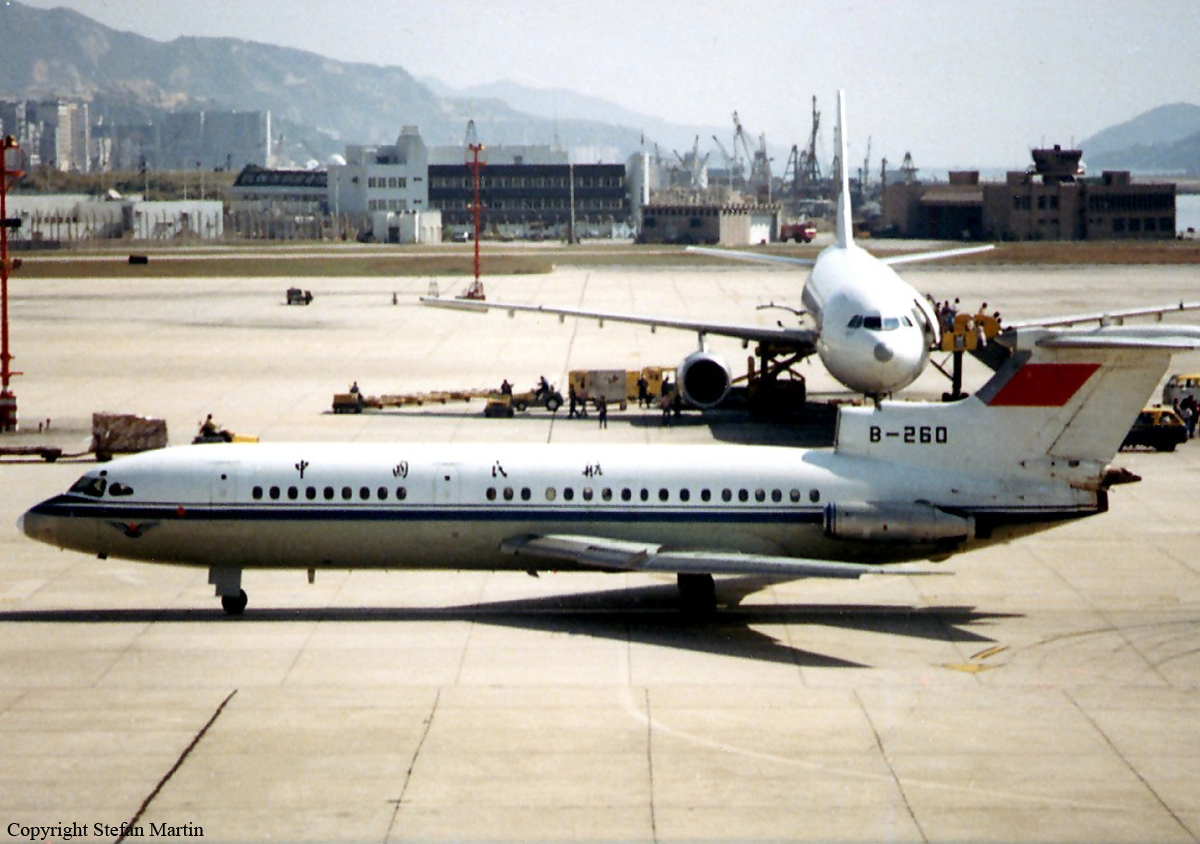
Crash of a Hawker-Siddeley HS.121 Trident 2E near Guilin: 112 killed
Date & Time:
Apr 26, 1982 at 1645 LT
Registration:
B-266
Survivors:
No
Schedule:
Guangzhou - Guilin
MSN:
2170
YOM:
1975
Flight number:
CA3302
Crew on board:
8
Crew fatalities:
Pax on board:
104
Pax fatalities:
Other fatalities:
Total fatalities:
112
Circumstances:
While descending to Guilin Airport on a flight from Guangzhou-Baiyun Airport, the crew encountered poor weather conditions with heavy rain falls. In limited visibility, the three engine aircraft struck the slope of Mt Yangsu located about 40 km from Guilin. The aircraft disintegrated on impact and all 112 occupants were killed.
Crash of a Hawker-Siddeley HS.121 Trident 2E in Beijing: 192 killed
Date & Time:
Mar 14, 1979 at 0852 LT
Registration:
B-274
Survivors:
No
Schedule:
Beijing - Beijing
MSN:
2172
YOM:
1976
Crew on board:
12
Crew fatalities:
Pax on board:
0
Pax fatalities:
Other fatalities:
Total fatalities:
192
Circumstances:
The crew departed Beijing-Xijiao Airport for a local training mission. Shortly after takeoff, while in initial climb, the three engine airplane lost height and crashed in a huge explosion into a factory located near the airport. All 12 occupants as well as at least 180 people in the factory were killed.
Probable cause:
It was reported that the pilot-in-command has limited experience and was not familiar with this type of aircraft.
Crash of a Hawker Siddeley HS.121 Trident 3B in Vrbovec: 63 killed
Date & Time:
Sep 10, 1976 at 1114 LT
Registration:
G-AWZT
Survivors:
No
Schedule:
London - Istanbul
MSN:
2320
YOM:
1972
Flight number:
BA476
Crew on board:
9
Crew fatalities:
Pax on board:
54
Pax fatalities:
Other fatalities:
Total fatalities:
63
Captain / Total hours on type:
399.00
Copilot / Total hours on type:
1592
Aircraft flight hours:
8627
Aircraft flight cycles:
6952
Circumstances:
Hawker Siddeley HS-121 Trident 3B operated by British Airways as flight BE476 and a McDonnell Douglas DC-9-32, operated by Inex-Adria Aviopromet, were destroyed when both aircraft crashed near Vrobec following a mid-air collision. All 176 on board both aircraft were killed. The Trident was on a scheduled flight from London-Heathrow Airport in England to Istanbul-Yesilköy Airport in Turkey, carrying 54 passengers and a crew of 9. The aircraft took off at 08:32 GMT and the flight proceeded normally. First contact with the Zagreb Area Control Centre was established on the Upper Sector frequency 134,45 MHz at 10:04 GMT. The flight was requested to report passing the Zagreb VOR at flight level 330. The aircraft flew along the centreline of airway UB5 with slight side deviation 1-2 km to the right due to wind. At 2 minutes and 50 seconds before the collision, the aircraft changed heading to 115° to head back towards the airway centreline. Airspeed was 295 Kts. The DC-9 departed Split Airport at 09:48 GMT to fly 108 West German tourists back to Cologne. Flight JP550 was issued instructions to climb to FL180. At 09:54 the flight, on passing flight level 130, switched to the Zagreb Area Control Centre lower sector east frequency of 124.6 MHz, receiving clearance to climb to FL240 and later to FL260. At 10:03 the crew switched to the frequency of the middle sector controller, responsible for safety and regulation of traffic between flight levels 250 and 310. This controller cleared to flight to FL350. The aircraft assumed a heading of 353° and a speed of 273 Kts as it passed a beam and to the west of the KOS NDB, approximately 2-3 km from the airway centreline. While heading towards the Zagreb VOR, the flight crew radioed the Upper Sector controller on frequency 134,45 MHz at 10:14:04 GMT and reported that they were climbing through FL325. The controller then requested, in Serbo-Croatian, flight JP550 to maintain their present altitude and report passing the Zagreb VOR. The controller stated that an aircraft was in front passing from left to right at FL335, while in fact BE476 was at FL330. At 10:14:38 the crew replied, also in Serbo-Croatian, that they where maintaining FL330. Three seconds later both aircraft collided. The outer five meters of the DC-9's left wing cut through the Trident's cockpit. Due to the sudden decompression, the forward part of the Trident's fuselage disintegrated. The remaining part of the fuselage struck the ground tail-first. With it's left wing torn off, the DC-9 tumbled down and hit the ground right-wing first.
Probable cause:
Direct cause of the accident was the struck of the DC-9 wing into the middle side of the Trident 3B fuselage which occurred at the height of 33.000 feet above Zagreb VOR so that both aircraft became uncontrollable and fell on the ground.
- Improper ATC operation,
- Non-compliance with regulations on continuous listening to the appropriate radio frequency of ATC,
- Non-performance of look-out duty from the cockpits of either aircraft.
- Improper ATC operation,
- Non-compliance with regulations on continuous listening to the appropriate radio frequency of ATC,
- Non-performance of look-out duty from the cockpits of either aircraft.
Final Report:
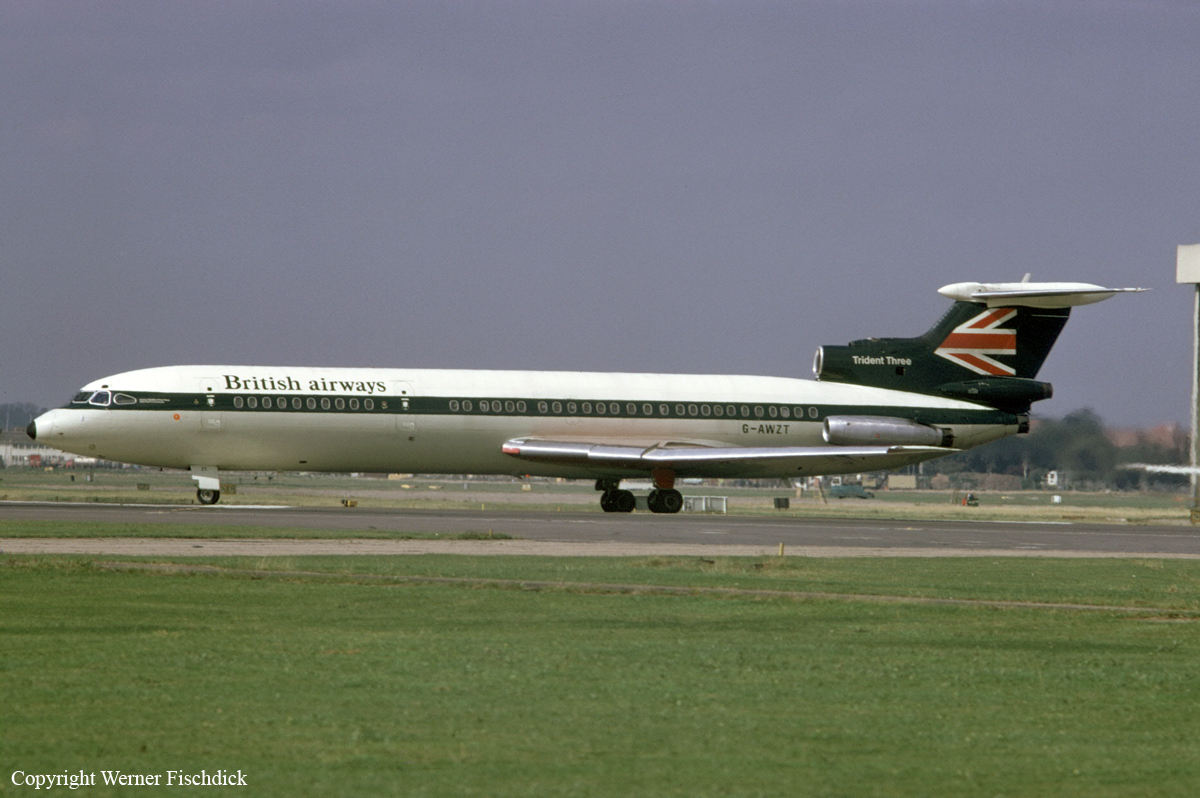

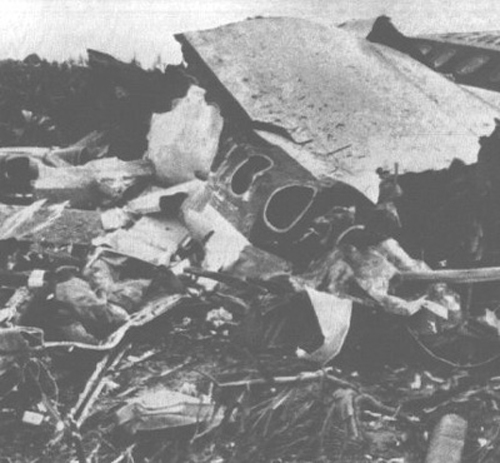

Crash of a Hawker-Siddeley HS.121 Trident 1E-140 in Bilbao
Date & Time:
Sep 15, 1975 at 1548 LT
Registration:
G-AVYD
Survivors:
Yes
Schedule:
Bilbao - London
MSN:
2138
YOM:
1969
Flight number:
BA552
Crew on board:
7
Crew fatalities:
Pax on board:
110
Pax fatalities:
Other fatalities:
Total fatalities:
0
Captain / Total hours on type:
1685.00
Copilot / Total hours on type:
782
Aircraft flight hours:
12892
Circumstances:
The taxi drills were actioned by the First Officer and the Flight Engineer during this time and "runway items" were completed after the Commander turned the aircraft through 180° close to the threshold of runway 28, aligned it on the runway centre line, and selected the wheel brakes to park. A power setting of 100 per cent thrust was made, all engine indications were checked as correct, and the engine relight switches were selected 'ON' before the wheel brakes were released and the takeoff run commenced at about 13:46 with the Commander piloting the aircraft. The aircraft accelerated normally ; the First Officer called out the indicated airspeeds at 80 knots and 100 knots and made a call of 'Wet V1' at 117 knots then removed his hand from the throttles. At the time or just after 'Wet V1' was called the Flight Engineer and the First Officer heard a noise which the latter crew member attributed to the aircraft's entry into standing water. According to the Flight Engineer the aircraft appeared to decelerate at the same time that he heard the noise. The Commander felt a marked deceleration consistent with a loss of engine power, whereupon he immediately closed the throttles, called "Abandon", deployed the airbrakes and lift dumpers and applied the wheel brakes fully. However according to the Flight Engineer all engine indications had been normal prior to the closing of the throttles. On seeing a hand close the throttles the First Officer selected emergency reverse thrust on the pod engines, checked the engine indications were correct and maintained the application of emergency reverse thrust until the aircraft eventually came to rest. The First Officer and the Commander checked the indicated pressures on the wheel brake gauges which showed the wheel brakes were fully applied. The initial deceleration felt satisfactory to the crew, then quickly deteriorated and the First Officer formed the impression that the aircraft was aquaplaning. The Flight Engineer then noticed that the aircraft had begun to drift gradually to the left of the runway centreline apparently as the result of a deliberate action by the Commander. Subsequently it became evident to the Commander that he could not bring the aircraft to a halt within the runway confines. Some 200 metres to 300 metres before the end of the runway he turned the aircraft to the left using nose-wheel steering and applied full left rudder. As the nose wheels ran off the runway onto the grass, the aircraft slewed to the left then skidded broadside to the right for a short distance before it came to an abrupt stop at the side of the runway in a right wing down attitude with the right wing tip close to the threshold lights of runway 10. Evacuation drills were initiated and the passengers left the aircraft in a reasonably orderly manner, the majority by slide from the main exit doors and foremost right overwing emergency exit. Catering equipment in the galleys came out of stowage during the accident obstructing access to the forward emergency exit door and preventing use of this exit and its slide during the evacuation. All 117 occupants escaped uninjured while the aircraft was considered as damaged beyond repair.
Probable cause:
The accident was caused by the Commander's decision to abandon take-off on a wet runway at or close to V 1 . Contributory factors were the low effective braking coefficient of friction achieved by the aircraft and the failure of the Commander to ascertain the extent and depth of water present on the runway prior to takeoff.
Final Report:
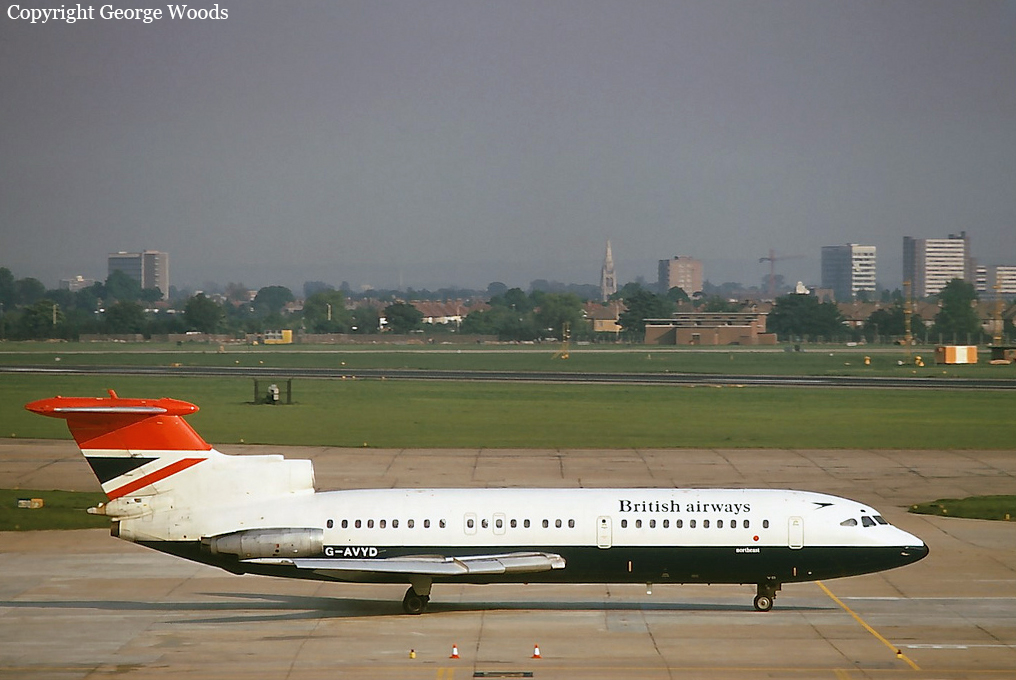
Crash of a Hawker-Siddeley HS.121 Trident 1C in London: 118 killed
Date & Time:
Jun 18, 1972 at 1711 LT
Registration:
G-ARPI
Survivors:
No
Schedule:
London - Brussels
MSN:
2109
YOM:
1964
Flight number:
BE548
Crew on board:
9
Crew fatalities:
Pax on board:
109
Pax fatalities:
Other fatalities:
Total fatalities:
118
Captain / Total hours on type:
4000.00
Copilot / Total hours on type:
750
Circumstances:
Following a normal takeoff roll on runway 28R, the aircraft rotated 42 seconds after brakes were released and lifted off 2 seconds later at 145 knots IAS. At 63 seconds the autopilot was engaged 355 feet above the runway at 170 knots IAS; the IAS speed lock was selected shortly thereafter. At 74 seconds the aircraft started a 20° banked turn to port towards the Epsom Non-Directional Beacon (NDB). At 83 seconds the captain reported 'Climbing as cleared'. He was then instructed to change frequency and contact London Air Traffic Control Centre. At 93 seconds the noise-abatement procedure was initiated. On the assumption that the captain was the handling pilot, this would involve the second officer selecting the flaps fully up and operating the thrust levers to reduce power to the pre-calculated figure. At 100 seconds the captain called 'Passing 1500' and at 103 seconds the aircraft was cleared to climb to Flight Level 60. This message was acknowledged by the captain at 108 seconds with the terse call 'up to 60'. This was the last message received from the flight. At second 114 when the airspeed was 162 knots and the altitude 1,772 feet, the droop lever was selected up putting the aircraft into the area of the stall as the droop started to move. At second 116 the stick-pusher stall recovery device operated, causing the autopilot automatically to disengage and the nose of the aircraft to pitch down and the stick-push to cease as the incidence decreased. Since the elevator trim would stay at its position on autopilot disengagement which at that speed with the droop up would be - the incidence then increased causing a second stick-push at second 124 and a third at second 127. At second 128 the stall recovery system was manually inhibited by pulling the lever. The aircraft then pitched up rapidly, losing speed and height, entering very soon afterwards the true aerodynamic stall and then a deep stall from which at that height no recovery was possible. Impact was at second 150 in a field next to the A30 motorway. The aircraft was totally destroyed and none of the 118 occupants survived the crash.
Probable cause:
The immediate causes of the accident were these:
- A failure by Captain Key to achieve and maintain adequate speed after noise-abatement procedures,
- Retraction of the droops at some 60 knots below the proper speed causing the aircraft to enter the stall regime and the stick-shaker and pusher to operate,
- Failure by the crew to monitor the speed errors and to observe the movement of the droop lever,
- Failure by the crew to diagnose the reason for the stick-shaker operation and the concomitant warnings,
- The dumping by the crew of the stall recovery system.
The underlying causes were these:
- The abnormal heart condition of Captain Key leading to lack of concentration and impaired judgment sufficient to account for his toleration of the speed errors and to his retraction of, or order to retract, the droops in mistake for the flaps,
- Some distraction, the nature of which is uncertain, possibly due to the presence of Captain Collins as a passenger on the flight deck, which caused S/O Ticehurst's attention to wander from his monitoring duties,
- Lack of training directed at the possibility of 'subtle' pilot incapacitation,
- Lack of experience of S/O Keighley,
- Lack of knowledge in the crew of the possibility or implication of a change of configuration stall,
- Lack of knowledge on the part of the crew that a stick-shaker and push might be experienced almost simultaneously and of the probable cause of such an event,
- Lack of any mechanism to prevent retraction of the droops at too low a speed after flap-retraction.
- A failure by Captain Key to achieve and maintain adequate speed after noise-abatement procedures,
- Retraction of the droops at some 60 knots below the proper speed causing the aircraft to enter the stall regime and the stick-shaker and pusher to operate,
- Failure by the crew to monitor the speed errors and to observe the movement of the droop lever,
- Failure by the crew to diagnose the reason for the stick-shaker operation and the concomitant warnings,
- The dumping by the crew of the stall recovery system.
The underlying causes were these:
- The abnormal heart condition of Captain Key leading to lack of concentration and impaired judgment sufficient to account for his toleration of the speed errors and to his retraction of, or order to retract, the droops in mistake for the flaps,
- Some distraction, the nature of which is uncertain, possibly due to the presence of Captain Collins as a passenger on the flight deck, which caused S/O Ticehurst's attention to wander from his monitoring duties,
- Lack of training directed at the possibility of 'subtle' pilot incapacitation,
- Lack of experience of S/O Keighley,
- Lack of knowledge in the crew of the possibility or implication of a change of configuration stall,
- Lack of knowledge on the part of the crew that a stick-shaker and push might be experienced almost simultaneously and of the probable cause of such an event,
- Lack of any mechanism to prevent retraction of the droops at too low a speed after flap-retraction.
Final Report:
